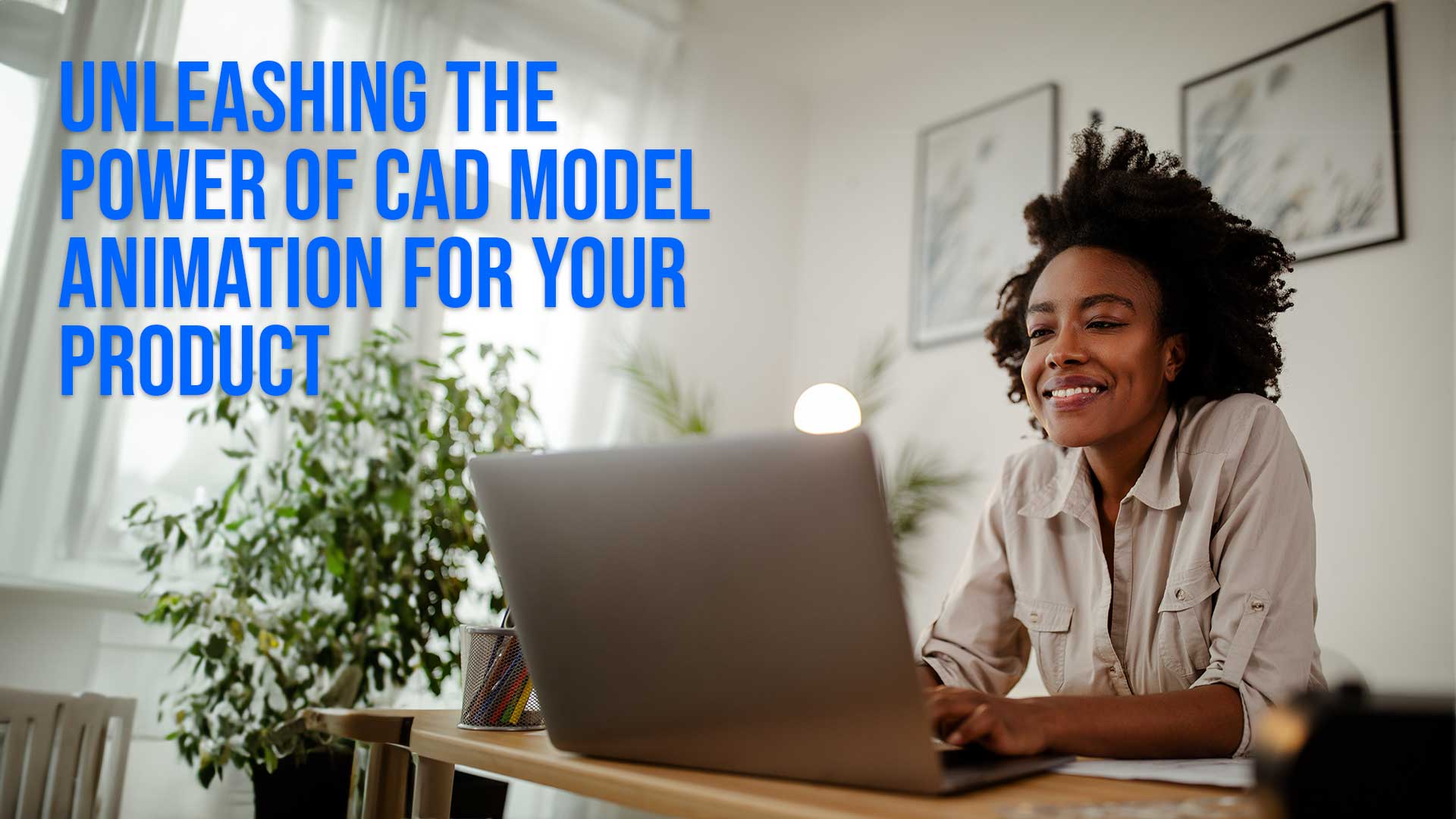Step into the World of CAD Model Animation
In the digital world, CAD model animation is the secret sauce that brings your product to life.
CAD stands for Computer Aided Design and it's the model file that mechanical engineers create to hand over your idea into actual production.
It's not just about creating static 3D models anymore; it's about transforming them into dynamic, realistic animations.
When you animate your 3D CAD model, you transcend the boundaries of reality, showing your product in action, in a way that still images and a page of text can't capture.
Why Animate Your CAD Models?
The primary reason to create CAD animations is for marketing purposes.
A well-crafted CAD model animation can demonstrate the utility of your product, how it functions, and how it fits into the daily life of your target audience.
These animations can be the centerpiece of your product's marketing campaign, contributing to the product development process and enhancing customer understanding of your product.
The Process of Creating CAD Animations
Creating a CAD model animation involves several key steps.
First, you need to have a well-detailed 3D CAD model of your product.
Next, you need animation software like 3DS Max, Solid Edge, or Blender, which can take your 3D model and bring it to life.
This includes adding realistic textures (not included in CAD models) and professional video features like cameras, lighting, and environment.
Choosing the Right CAD Software
The choice of CAD software is crucial to the success of your CAD model animation.
Tools like AutoCAD, Solid Edge, and 3DS Max offer different features suited to different types of animations.
Some software is better suited for architectural animations, while others excel at product animations.
Applications like Blender and Cinema4D are more geared towards professional video production, but they can import STL files or STEP files from your CAD applications.
Importing Your CAD Model into Animation Software
Once you have chosen your software, the next step is to import your 3D CAD models into the animation software.
This process varies from one software to another, but it is usually straightforward.
For example, in Blender, you can import your CAD model directly and then use the animation tools within Blender to create your animation.
Texturing Your CAD Model
Before diving into the animation process, it's crucial to understand the importance of texturing your CAD model.
CAD models are primarily designed for production purposes, focusing on precision and technical specifications. They might not always have the visual detail required for a compelling video or animation.
This is where texturing comes into play.
Texturing involves applying materials and finishes to the surfaces of your 3D model, which can dramatically enhance its visual appeal.
It can add color, shine, roughness, and even complex patterns to your model, making it more visually interesting and realistic.
By properly texturing your CAD model, you ensure that it doesn't appear sterile or artificial in your animations.
Instead, it takes on a lifelike appearance that can engage viewers and effectively showcase your product's final designs and functionality.
Lighting Your CAD Model
Once you've textured your CAD model, the next crucial aspect to consider is lighting. Proper lighting can make a significant difference in the quality and realism of your CAD model animation.
It is an often-overlooked factor that can add depth and realism to your scene.
One of the most effective lighting techniques to consider is High Dynamic Range Imaging (HDRI) lighting.
HDRI lighting uses a 360-degree image that contains information about light intensity from all directions. When used as an environment map in your scene, it provides realistic lighting and reflections based on real-world conditions.
This type of lighting can help your CAD model look more natural and convincing, adding another layer of realism to your animations.
It can enhance the textures you've applied, highlight the shape and form of your model, and create a more immersive and engaging visual experience for your viewers.
With your CAD model textured and well-lit, you're now ready to move onto the exciting part - bringing it to life through animation.
Animating Your CAD Model
Now comes the exciting part - animating your 3D model.
This process involves setting keyframes for your model's movement, rotation, and scale over time.
The animation tools in your software will interpolate between these keyframes, creating smooth animations. It's during this stage that your product begins to come alive.
Rendering Your Animation
Once you've set up your animation, the final step is rendering videos. Rendering software takes your animations and generates high-quality video output. This video can then be used for marketing, presentations, or support purposes.
CAD Model Animation Services
If you find the process of creating CAD animations challenging, you can also hire a professional CAD model animation company.
These companies have the experience and knowledge necessary to create high-quality animations that can showcase your product in the best possible light.
It's one thing to have a 3D model animation, but it's another to pair it with exciting editing, music, voiceover, and supporting motion graphics to create a compelling video for marketing purposes.
CAD Model Animation FAQ
Can CAD be used for animation?
Yes, CAD software can be used to create animations. Most CAD software allows you to set keyframes for your 3D models and create smooth animations.
How are 3D models animated?
3D models are animated by setting keyframes for different properties like position, rotation, and scale. The software then interpolates between these keyframes to create smooth 3d animations.
How do I use CAD model in Blender?
You can import your CAD model into Blender using the import function. Once imported, you can use the 3d animation tools within Blender to create animations.
How to make 3D animation?
Making a 3D animation involves creating a 3D model, setting keyframes for the model's properties, and then rendering the animation to create a video.
